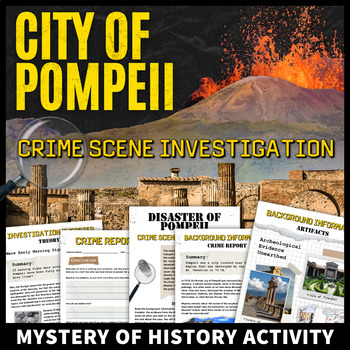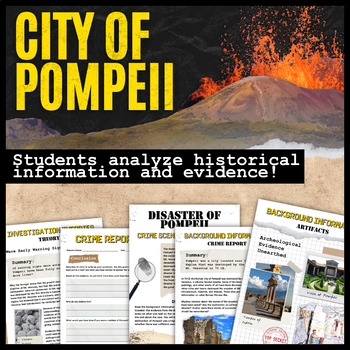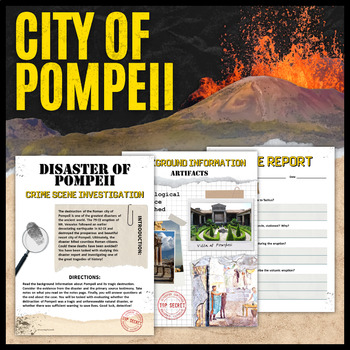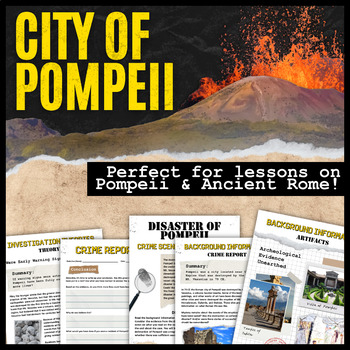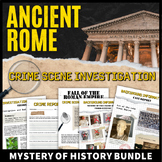Pompeii Destruction Ancient Rome Activity CSI Mystery of History Analysis
- PDF
What educators are saying
Also included in
- Make learning about ancient Rome engaging and educational with this bundle of investigation activities! Your students will try to crack the great mysteries of ancient Rome through investigation case file activities that encourage historical and creative thinking. Perfect for lessons on the Roman EmpPrice $12.49Original Price $21.97Save $9.48
Description
Make learning about the destruction of the Roman city of Pompeii and Mt. Vesuvius engaging and educational with this investigation activity! Your students will learn about the disaster of Pompeii through a crime scene investigation case file activity that encourages historical and creative thinking, and incorporates primary source testimony from Pliny the Younger. Perfect for lessons on ancient civilizations and world history, this resource makes Ancient Rome come to life!
A visually engaging case file with comprehensive background readings on the history of Pompeii, daily life in Pompeii, Mt. Vesuvius, Pliny the Younger, the rediscovery of Pompeii, and more is included. Student detectives will view supporting artifacts and read theories and Pliny the Younger's letter to the Roman historian Tacitus about the destruction of Pompeii. Students will then answer the reading comprehension response questions, analyze Pliny the Younger's letter, complete a timeline activity, and draw their own hypothesis about the destruction of Pompeii based on historical evidence and the theories in the case file! Students can write their own letters to Pliny the Younger in an extension activity. Pliny the Younger's second letter to Tacitus is included as a bonus supplementary reading.
This investigation activity can be used as a printable packet activity, or as an engaging stations classroom activity with groups! Teacher and student instructions are provided, along with an answer key for the background reading comprehension activity.
This activity is provided in both ready-to-print color and black and white versions.
This resource makes learning about Pompeii, Ancient Rome, and archeology highly engaging and is a great supplement, introduction, or reinforcement activity to any lesson!
Looking for more mystery of history CSI activities? Check out the Ancient Rome CSI Activity Bundle!
Also explore the Julius Caesar CSI Activity, Collapse of the Maya Civilization CSI Activity, Machu Picchu CSI Activity, Lost Colony of Roanoke CSI Activity, and the Death of King Tut CSI Activity!
Follow Learning Pyramid to stay in the loop about sales, free releases, and new products!

